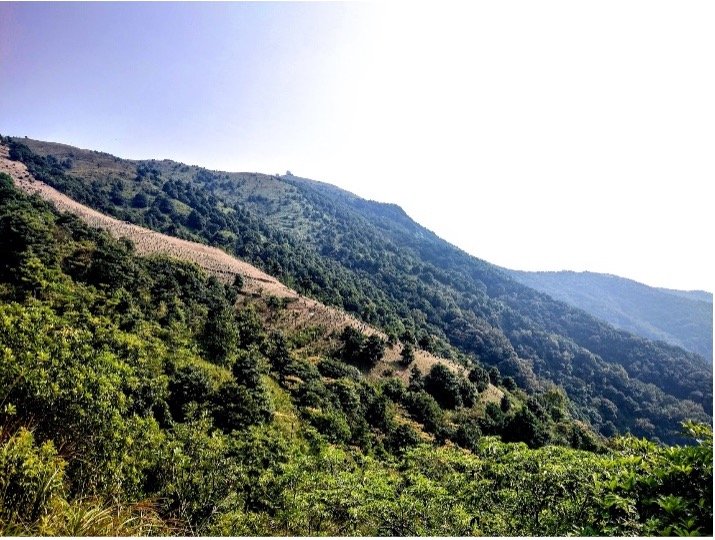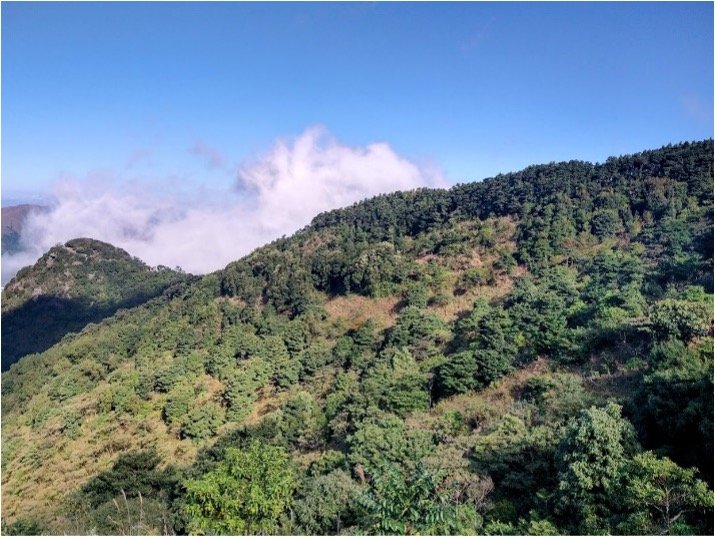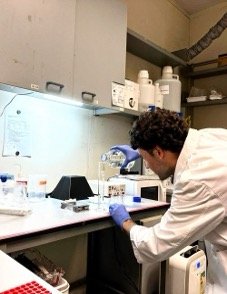Groundbreaking Biodiversity; Uncovering the Recovery of Soil Microbial and Fungal Communities in Hong Kong’s Regenerating Tropical Forests (by Coşkun Güçlü)
by Mr. Coşkun Güçlü, PhD Candidate in the Biodiversity and Environmental Change Lab at The Kadoorie School of Biological Sciences, The University of Hong Kong, and 2023 eDNA Collaborative Microgrant recipient
I’m Coskun, a final year PhD Candidate at The University of Hong Kong. My research focusses on evaluating the ecological consequences and outcomes of the regeneration of tropical forests in Hong Kong, where I use eDNA and metagenomic approaches to characterize soil microbial and fungal communities in these systems. I’m particularly interested in the ways secondary succession and restoration impact soil fungal and microbial species diversity as above-ground plant communities recover, and how this impacts ecosystem functions such as carbon fluxes.
Figure 1. A closing canopy in a young secondary forest in Hong Kong SAR, China
Global forests have been subject to historical disturbances over several millennia, as biodiverse forested landscapes have been cleared by humans for agriculture, and more recently, industrial and urban development. Over the last three centuries, anthropogenic deforestation has rapidly accelerated, and an area of forest 1.5 times the size of the United States of America has been cleared since the 1700s. Hong Kong has not been exceptional to this global trend, with sustained deforestation commencing from 1000-1700 for the development of rice paddies and tea terraces. However, in the 20th and 21st centuries, urban industrial centres have significantly grown, and as more people have migrated to cities and abandoned traditional forms of land management, secondary forests have started to undergo spontaneous regeneration.
Figure 2. Secondary forests in Hong Kong cover a large amount of the territory, growing adjacent to densely populated urban centres such as Kowloon.
In fact, 70% of forests in Asia, the part of the world where I conduct my research, are now classified as regenerating, while widespread initiatives have sought to augment this process by actively replanting forests. Forests in Hong Kong fall almost entirely within this regenerating classification, aside from small patches of Feng Shui Woods (風水林) which have been maintained by traditional agro-forestry approaches. Hong Kong’s forests are predominantly young and undergoing spontaneous and assisted regeneration from a mixture of active replanting and passive land abandonment after almost total clearance during the second world war.
Figure 3. Evidence of historical land use can be found in the landscape, with lines in the hillsides showing where tea terraces were once farmed as part of the regional tea industry. Now these areas are undergoing active and passive regeneration
While global forests offer a range of important above-ground ecosystem services, hosting over 80% of all terrestrial animal, plant, and insect species, providing livelihoods for over a billion people, and sequestering vast amounts of carbon, the world hidden beneath our feet, the soil biome, is often overlooked. Soils host around a quarter of all biodiversity on earth, and the global soil carbon pool stores three times the amount of carbon as is found in the Earth's atmosphere. Soil microbial species and symbiotic fungi play important roles in the sequestration of soil carbon and the maintenance of plant community biodiversity, making them crucial to consider when studying forest regeneration. And herein lies the overarching question of my PhD research; What are the impacts and legacies of deforestation upon the soil biome, and what are the responses of soil microbial and fungal species to reforestation?
Figure 4. I use eDNA and metagenomic approaches to study the soil microbial and fungal biome, collecting soil samples in the field before returning to the lab to conduct molecular analyses.
My work investigates the responses of forest soil microbial and fungal species to active and passive forms of reforestation in Hong Kong. I’m interested to know whether actively and passively reforested systems host distinct communities of soil microbial and fungal species, and whether these do or do not influence ecosystem functions, such as soil carbon respiration. To do so, I am using a combination of eDNA and metagenomics to identify the diversity of soil microbial and fungal species, with a particular focus upon arbuscular mycorrhizal species due to the symbiotic relationships they form with plant hosts, and the role these species play in the carbon cycle.





